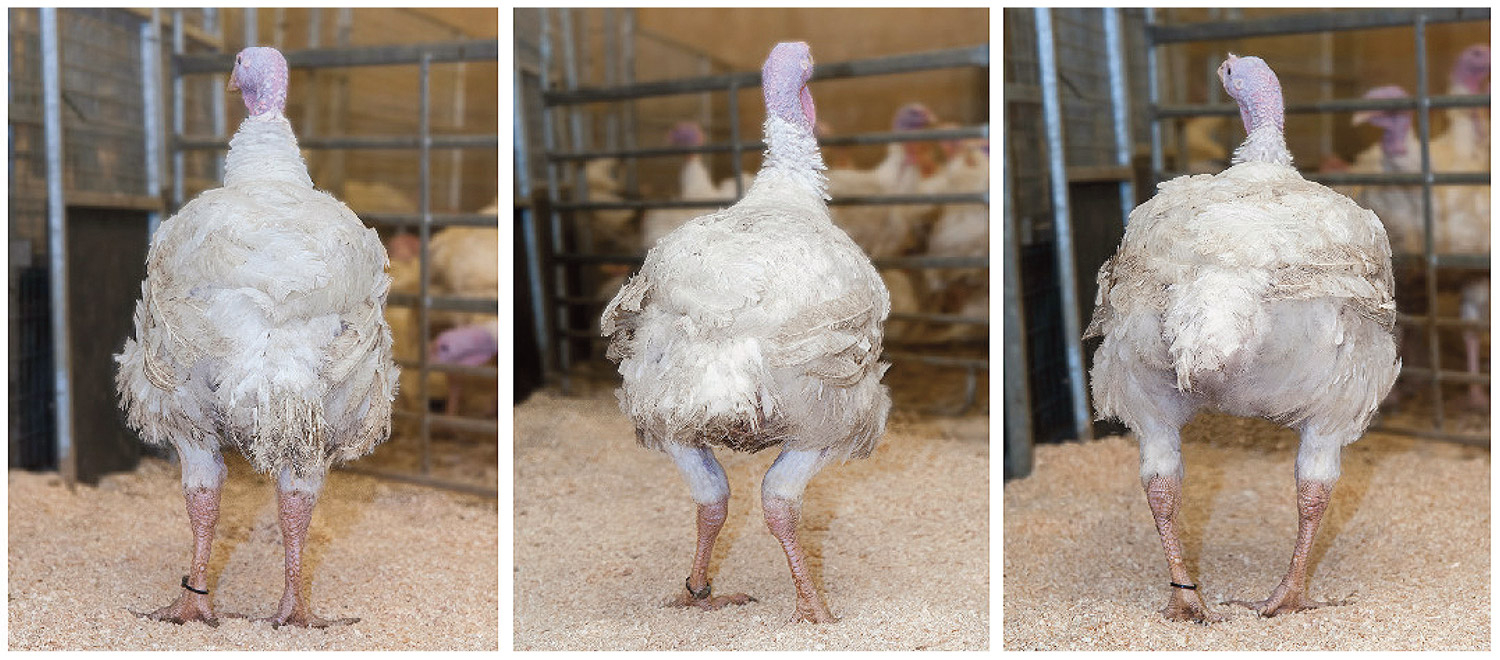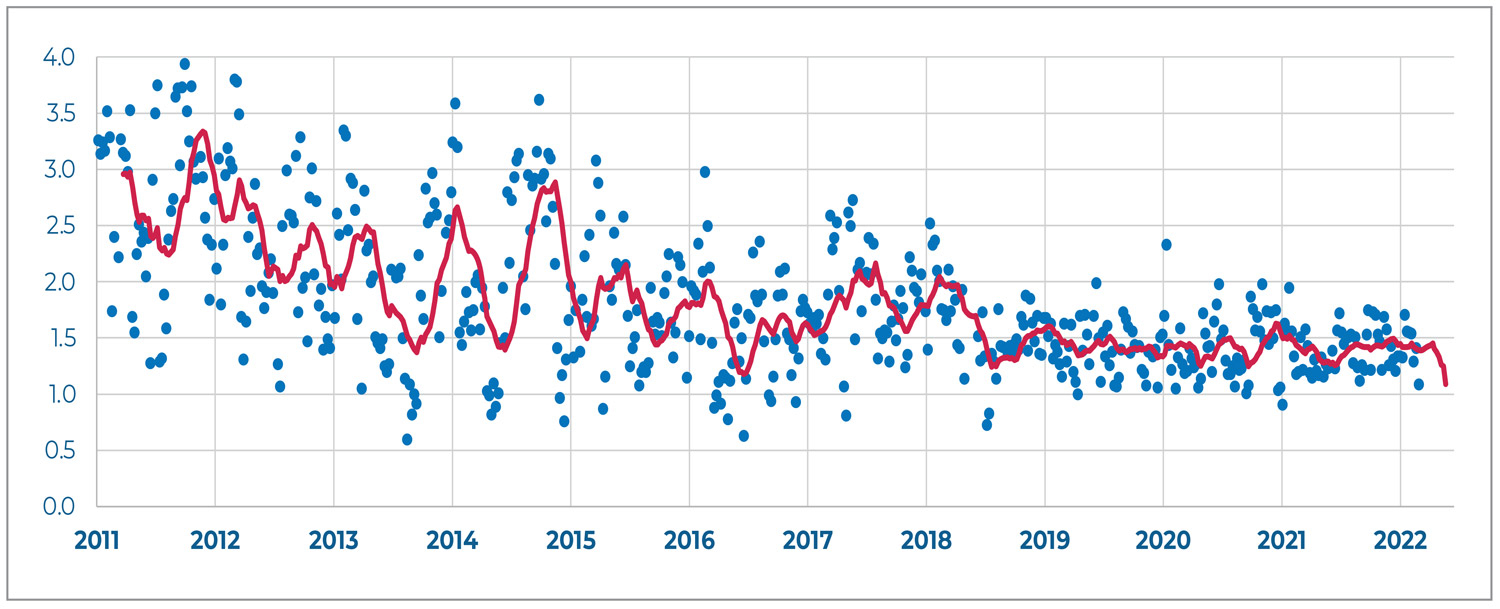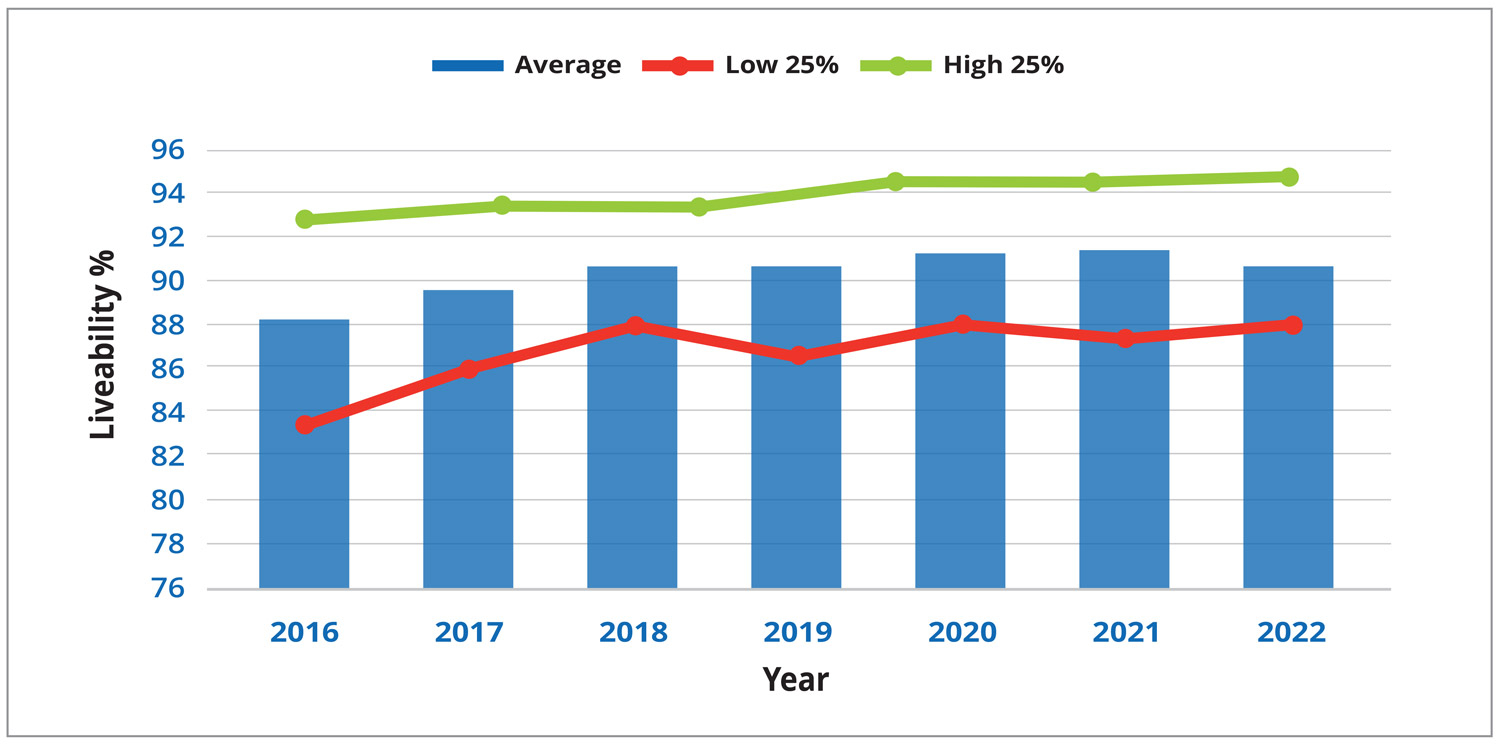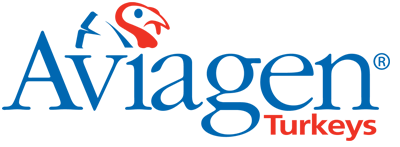Achievements in breeding for turkey welfare and future challenges
Management of bird health, nutrition, genetics and husbandry plays a key role in the welfare of turkeys. Aviagen® Turkeys works hard to improve turkey welfare through selection technologies and measurable achievements have been achieved. A balanced breeding approach is taken to selective breeding where it is possible to improve many different traits at the same time.
Evidence for improvements in welfare traits comes from a number of sources: Genetic and phenotypic (observed) trends from the breeding programme and field performance of the parent and commercial crosses.
Leg Health metrics used include: gait scoring, leg defects (figure 1), footpad dermatitis (FPD), hock lesions, toe defects and hand-held x-ray assessment for sub-clinical defect detection. Water consumption assessment is used to identify birds causing excessive wet litter, which contributes to FPD. The recent addition of footpad shape allows us to increase rates of progress in FPD (figure 2).

Figure 1. Leg health assessment in turkeys. Healthy (left), valgus (middle) and varus (right) deformities.

Figure 2. FPD scores of B.U.T. 6 pedigree birds. Lower scores represent lower FPD.
A key component of good welfare is the ability of birds to thrive in a variety of environments. Pedigree facilities replicate a typical farming environment but with a very high biosecurity standards. To measure birds grown under natural health challenges, siblings of pedigree birds are assessed in lower hygiene conditions. Pedigree selections are then based on performance measurements from both locations. This multi-environment strategy has made current generations of birds better able to adapt to the wider range of management circumstances they may encounter in the field.
Mortality is recorded at all stages of the production cycle as well as in pedigree and sib-test environments. Liveability is also indirectly improved through selection for traits like leg health, carcass defects and feather coverage (to protect against scratching damage). There is clear evidence the breeds are showing improved liveability over time (figure 3). Selection for early liveability is also included and our recent research has resulted in novel traits being used to enhance rates of progress.

Figure 3. Field liveability of BUT6 commercial males.
Significant efforts are being made to address emerging challenges:
- Increasing automation, movement to whole house brooding systems and reduced labour inputs increases the importance of good start-ability of the turkey poult. Assessment of feed and water intake shortly after placement has a good heritability and a strong correlation with early liveability.
- Pecking and cannibalistic behaviours are part of the natural behaviour repertoire of turkeys and a range of on-farm interventions are used to reduce adverse effects. Potential breeding strategies to reduce pecking related damage focus on (i) reducing the likelihood of birds being damaged (ii) reducing the ability to damage others, and (iii) reduce the inclination to peck. This is an active area of research and showing significant promise.
Animal welfare is at the core of the selection processes in turkey breeding. Through balanced selection for better welfare outcomes alongside productivity, breeding is helping develop highly efficient breeds that perform well in a variety of environments with excellent standards of health and welfare. Management factors also have a large impact on welfare outcomes. Our management, nutrition and veterinary care advice will further enhance welfare and optimise performance.
